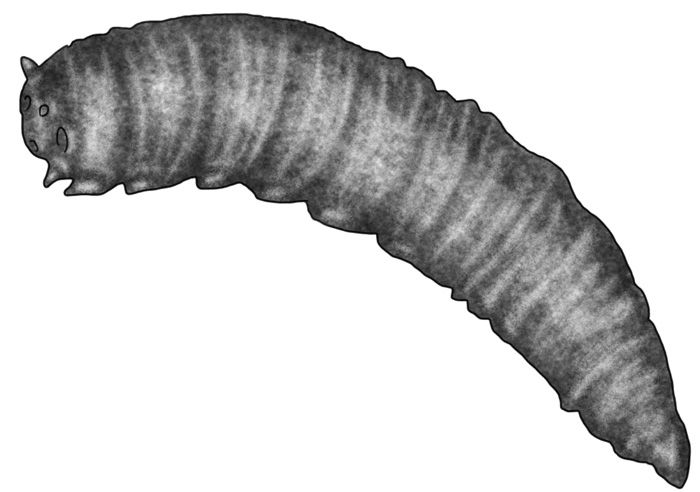
Leatherjacket larvae (cousins)
|
Classification (systematic position)
Animal Kingdom |
Morphological characteristics
Insect larvae with a cylindrical and gray body, no legs (apodia), very small head that can retract into the thorax, 6 fleshy papillae at the end of the abdomen. The body of a leatherjacket larva is soft but very strong and can elongate significantly.
Life cycle
The adult leatherjackets (nicknamed cousins) are mainly visible in summer and generally mate several times. Females lay up to 400 eggs when in flight, in fairly humid environments, on a support or on the ground directly. The larva (called gray worm) is very resistant to cold and digs galleries in the ground to feed and come out at night.
Diet
Leatherjacket larvae feed on dead organic matter preferably deposited at ground level or slightly buried. They also feed on roots, mainly grasses.
Natural predators or regulators
Amphibians, birds and bats are consumers of crane fly larvae.
Habitats
The crane fly larvae live in soils in environments rich in herbaceous plants (meadows, wasteland, crops, etc.).
Interests in the garden
The crane fly larvae being scavengers, they contribute to the degradation of organic matter and soil fertility and also to soil aeration by digging galleries. If leatherjacket predators are present, these larvae do little damage to plants even if they feed on their roots.
Did you know ?
The crane fly larvae present in your soil can all rise to the surface of the soil at the same time to avoid drowning when it has rained too much.





